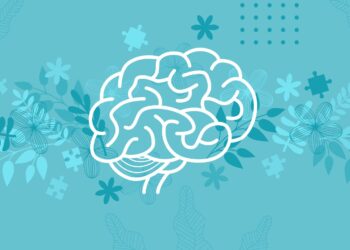In the hustle of daily life, mental health often becomes an afterthought, until it isn’t. Whether it’s a buildup of stress, unresolved trauma, or the weight of anxiety and depression, many people find themselves stuck in survival mode.
But what if the right kind of therapy could be the shift that moves someone from just getting by to genuinely thriving?
Therapy isn’t a one-size-fits-all solution. It comes in various forms, each designed to meet individuals where they are. Understanding your options can help you make empowered decisions about your mental well-being.
The Role of Therapy in Mental Health
Therapy is more than just talking about your feelings. At its core, it offers a structured space to explore emotional challenges, process past experiences, and develop practical coping tools. It’s a collaboration between a trained professional and a client, focused on fostering insight, resilience, and behavior change.
For those navigating issues like anxiety, depression, or PTSD, therapy can provide:
- A nonjudgmental space for self-expression
- Evidence-based tools for emotion regulation
- Long-term strategies for personal growth and healing
Therapy also strengthens emotional literacy, helping individuals name and understand their feelings, an essential skill for healthier communication and relationships. When people can articulate what they’re going through, they’re more likely to get the support they need and feel connected to those around them.
Over time, therapy fosters self-trust and resilience, enabling individuals to respond more thoughtfully to life’s challenges rather than react impulsively.
Types of Therapy: Finding What Fits
Each therapeutic modality has its strengths. Here’s a breakdown of some common options:
Cognitive Behavioral Therapy (CBT)
CBT is one of the most researched and widely used approaches. It focuses on identifying and reframing negative thought patterns that influence behavior. Ideal for anxiety and depression, CBT equips clients with skills to challenge unhelpful beliefs and build healthier habits.
Dialectical Behavior Therapy (DBT)
Initially developed for borderline personality disorder, DBT has expanded to support individuals dealing with emotional dysregulation, self-harm, and chronic stress.
This method blends mindfulness with skills like distress tolerance and interpersonal effectiveness. Many people with intense emotional responses benefit from structured approaches like dialectical behavior therapy, which teaches practical skills for managing distress.
Psychodynamic Therapy
This longer-term approach explores how unconscious patterns and early life experiences shape current behavior. It’s less structured than CBT but can lead to profound, lasting change through insight and emotional processing.
Group Therapy
There’s power in shared experience. Group therapy allows individuals to connect with others facing similar challenges, offering community, perspective, and mutual support. For issues like grief, addiction, or social anxiety, it can be an especially effective supplement to individual therapy. Many inpatient treatment centers use group therapy for individuals who want additional support as they navigate sobriety and other stressors in life.
Accessibility Matters: Therapy and Insurance
The right therapist makes all the difference, but so does access. Many people are unsure where to begin when it comes to navigating coverage. If you’re weighing your options, it helps to understand what your health plan offers.
Start by reviewing your insurance provider’s mental health benefits. Depending on your plan, you may have access to sessions with psychologists, licensed counselors, or even online platforms.
To avoid surprises, it’s smart to check your insurance-covered therapy options before booking an appointment. Some platforms even allow you to verify mental health benefits instantly, making it easier to plan your care.
If you’re uninsured or underinsured, don’t lose hope. Many therapists offer sliding scale fees based on income, and community mental health clinics may provide low-cost or free services. Nonprofits and universities with training clinics are also valuable resources, especially for those in need of immediate support.
Therapy Isn’t Just for Crises
One of the most enduring myths about therapy is that it’s only for people in acute distress. In reality, therapy is just as valuable for maintaining emotional balance as it is for crisis intervention.
Clients often begin therapy to:
- Build confidence and self-awareness
- Improve communication and relationships
- Navigate life transitions or career stress
- Set boundaries and reframe limiting beliefs
In other words, you don’t need a “big reason” to start. The simple desire to feel better and live more intentionally is reason enough.
What to Expect in Your First Sessions
Starting therapy can feel intimidating, especially if you’ve never done it before. Here’s what typically happens:
- Intake session: Your therapist will ask about your background, current challenges, and goals.
- Treatment plan: Together, you’ll outline a plan that includes session frequency, methods, and expectations.
- Ongoing sessions: Most sessions are 45-60 minutes and occur weekly. Progress is monitored and adjusted over time.
The key is to find a provider whose style and approach align with your needs. Don’t hesitate to shop around until you find someone you trust.
Embracing the Journey
Mental health is not a destination; it’s a continuous journey of growth, setbacks, and resilience. Therapy helps turn that journey into a guided path rather than a maze of uncertainty.
When individuals feel supported, seen, and empowered, they’re better equipped to handle life’s challenges. Whether you’re healing from trauma or simply striving for more emotional clarity, therapy can be the catalyst that moves you from surviving to thriving.
Because at the end of the day, everyone deserves the chance to flourish, not just function.















Discussion about this post